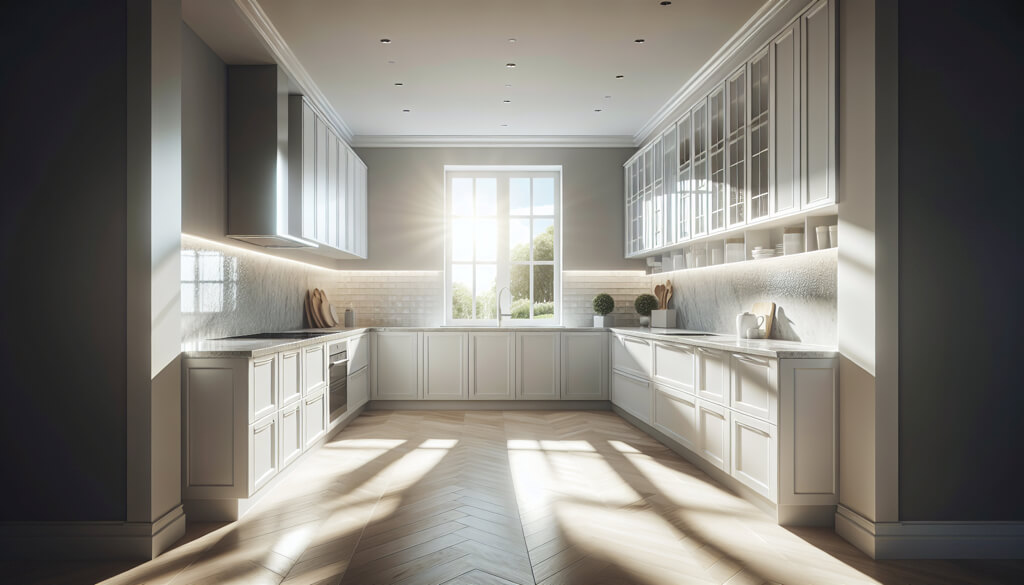
[Image generated with Dall-E]
In recent renovation articles, I’ve covered why we renovate rental properties (to increase their desirability to a specific tenant segment and reduce long-term maintenance costs), standardized renovation components (to improve efficiency and reduce costs), and what components to remove from the property. Today, I will discuss which components should be installed in a rental property.
How do you decide what to install? Based on your target tenants’ needs and wants and current market competition.
Remember that the goal of renovation is to maximize rental income while minimizing both time to rent and renovation costs. This requires understanding what your target tenant segment requires and “wants.”
How Tenants Select a Property to Rent
As a refresher, prospective tenants follow a two-step process when looking for a place to rent.
The first step is to narrow the list to only properties that match their housing requirements. For example, if their budget is $1,800/Mo, they will likely eliminate all properties listed above $1,800/Mo. They are unlikely to consider a two-bedroom home if they are a family of four. So, even if hundreds of properties are available to rent, the properties that match all their housing requirements are only a tiny subset.
(The data mining engine we developed selects properties that match the housing requirements of our target tenant segment. These are typically less than 0.5% of all available properties.)
Once they have a list of properties that match their housing requirements, tenants rank these properties based on how many of their “wants” each property meets. For our target segment, “wants” may include granite or quartz kitchen counters, stainless steel kitchen appliances, and many others. The property that meets all their housing requirements and satisfies the most “wants” is the property they are most likely to rent.
How Did We Determine Our Segment’s “Wants”?
Due to market changes, how we determined our segment’s “wants” through market research has evolved over the years.
Past Approach: Cruising Model Homes
In the past, identifying tenant segment preferences was straightforward. Because new homes were priced within our target tenant segment’s range, we could easily spot trends by visiting model homes. These model homes offered clear insights into the styles, layouts, and features that appealed to our target tenant segment.
Current Approach: Competitive Rental Properties
When new homes became too expensive for our target segment, we shifted our research to analyzing rental properties—comparing those that rented quickly against those that lingered on the market. This allowed us to identify which features attracted tenants and what to avoid, helping us minimize vacancy periods while maximizing rental income.
Below are some examples of what we learned.
Lighting
Lighting proved to be a critical factor in tenant preferences. Properties with 4K (daylight) LED bulbs rented approximately two weeks faster than those with 2.7K (yellow) bulbs. The brighter, more modern appearance of daylight bulbs enhanced the property’s appeal, making this a simple, cost-effective upgrade. Today, part of our standard renovation process is to replace all bulbs with 4K LED bulbs.
Rooms That Matter the Most
Our research revealed that tenants prioritize certain rooms over others when evaluating a rental property. The kitchen, primary bedroom, and primary bathroom consistently stood out as the most important spaces. Focusing renovation efforts and budget on these rooms made properties more attractive to our target segment, significantly reducing both time to rent and renovation costs.
Ceiling Fans
Our research also revealed the surprising impact of ceiling fans in (at least) the primary bedroom and living room. Properties with ceiling fans rented noticeably faster than those without. Another surprising fact is that while tenants value ceiling fans, they rarely use them.
Flooring
Our target segment values hard flooring over carpeting. We standardized on a single manufacturer, color, and style of LVP flooring. Standardization enabled our primary vendors to buy in bulk directly from the manufacturer instead of buying through retail stores at retail prices. While LVP is more expensive than carpet, it is far more durable. If there are budget constraints, we will put carpeting in the secondary bedrooms and on the stairs.
These are just some examples of the results of our demographic research.
Do We Make Every Property Look the Same?
No. We only renovate what makes sense. Below is how we categorize renovation items into three groups.
- Required: Health and safety items (e.g., functioning smoke detectors) and functionality items (e.g., all appliances must work correctly). There is no choice on these items.
- Necessary: The property must be clean (appearance and smell) and attractive to our demographic. This can include repainting the interior and updating appliances, etc.
- Enhancements: Every item in the category must be evaluated based on competition and payback period. We focus on these during the renovation review team meeting.
During due diligence, we evaluate which enhancement items make economic sense. The renovation team reviews each enhancement line item based on the payback period and current competition. See the illustration below.

I will describe each process step.
- All properties we recommend meet the housing requirements of our target segment. Based on our demographic research, we also know what our target tenant segment “wants.”
- The Property Report lists all renovation items necessary to meet as many of our target tenant segment’s “wants” as feasible. The renovation cost is not a significant consideration at this stage; we are compiling a comprehensive list for later refinement.
- The property manager researches the “wants” that available competitive properties meet. Competition is the primary consideration when determining the final renovation list.
- The team includes the client(s), Fernwood team members, the property manager, and others as needed.
- We review each enhancement item on the renovation list and decide what makes economic sense based on the segment’s “wants” and current competition.
- The final list contains items necessary to maximize rent while minimizing renovation costs.
Competition and Cost Are the Main Considerations
Suppose your property has attractive laminate kitchen counters. If the competition has granite, you will need to install granite to achieve a similar rent. If the competition also has laminate, then installing granite counters may not be worth the expense.
Minimizing renovation cost is a major consideration, and we may defer some enhancements. For example, a client purchased a property with “day-glow green” carpeting several years ago. I have never seen carpeting that bright. It looked terrible. So I included replacing the carpet on the renovation list. During the renovation team meeting, the property manager stated there was almost no competition, so replacing the carpet was unnecessary. The property was quickly rented, despite the bright green carpet.
Several years later, the property came back on the market. During the renovation review meeting, the property manager stated that there was significant competition, so the green carpet had to be replaced.
Just because you don’t need to renovate something today due to lack of competition, you may need to in the future. Each time your property returns to the market, you must reassess it against current competition. If you choose to do a full renovation in the beginning, you may not need to upgrade any components later, just maintain wear-and-tear items.
Conclusion
Our demographic research, combined with an analysis of current market competition, enables us to maximize rental income while minimizing renovation costs.






